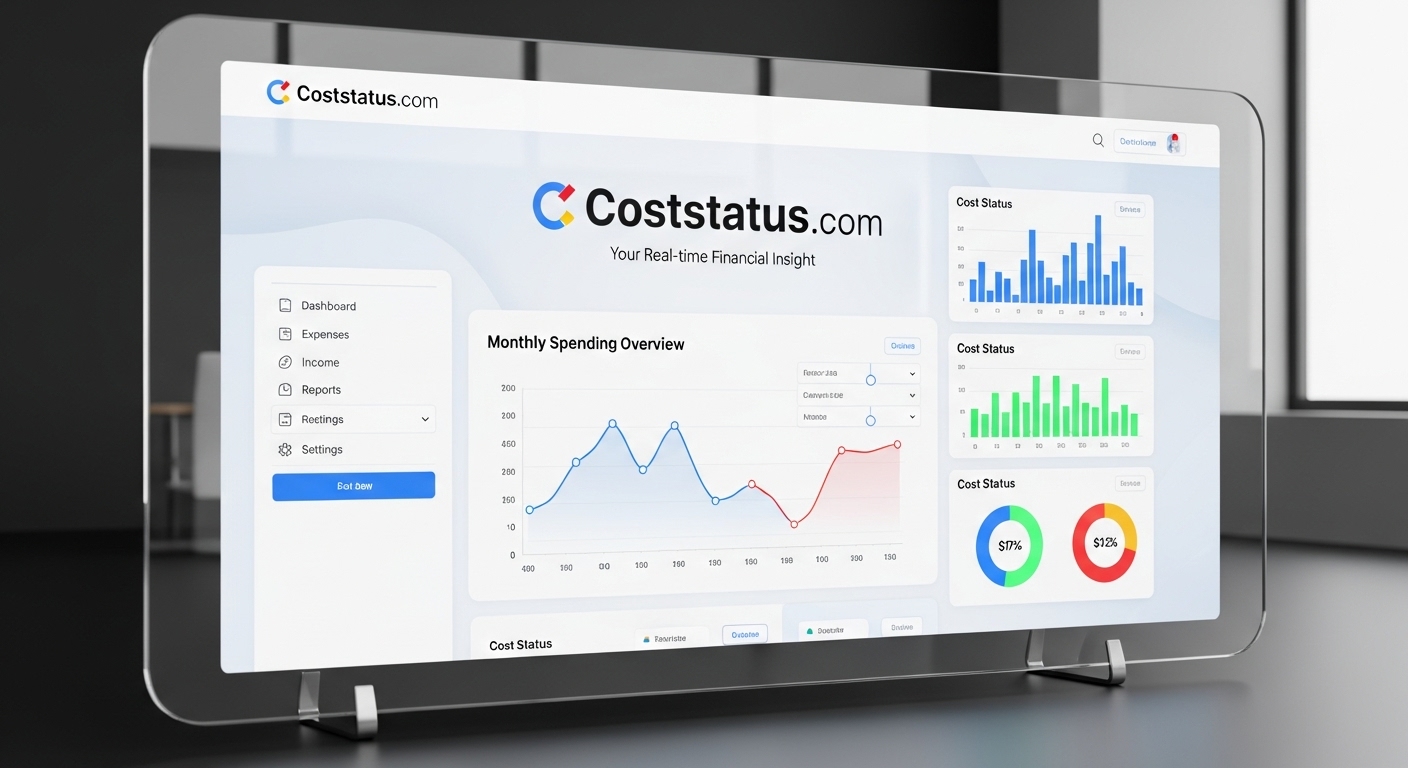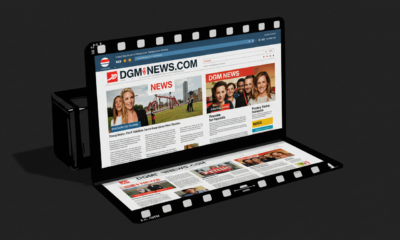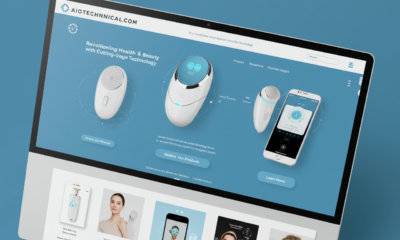BUSINESS
Expert Car Electrical Repair: Discover Nearby Local Services

Modern vehicles rely heavily on electrical systems for smooth operation. From starting the engine to powering headlights, air conditioning, infotainment systems, and advanced safety features, almost every part of a car depends on electricity. When something goes wrong, finding car electrical repair near me becomes an urgent necessity.
Car electrical problems can be tricky because they often involve complex wiring, computer systems, sensors, and modules. Unlike mechanical repairs, electrical issues usually require specialized diagnostic tools and skilled technicians. This is why locating a reliable auto electrical repair shop nearby can save you time, money, and stress.
This guide covers everything you need to know about car electrical repair, the most common problems, services offered, and tips for choosing the right local repair shop.
What Is Car Electrical Repair?
Car electrical repair focuses on diagnosing and fixing issues in a vehicle’s electrical and electronic systems. These include:
-
Starting and charging systems (battery, alternator, starter)
-
Lighting systems (headlights, brake lights, interior lights)
-
Ignition systems (spark plugs, ignition coils)
-
Control modules and sensors (ECU, ABS sensors, oxygen sensors)
-
Comfort and convenience features (power windows, locks, infotainment)
-
Safety systems (airbags, backup cameras, sensors)
Since cars are becoming more advanced with technology, electrical repair has become one of the most critical aspects of auto maintenance.
Signs You Need Car Electrical Repair Near Me
Electrical issues often show up in subtle ways before becoming major problems. If you notice any of the following, it’s time to search for a nearby auto electrical repair shop:
1. Car Won’t Start
If you turn the key or push the start button and hear clicking or nothing at all, it could indicate problems with the battery, alternator, or starter motor.
2. Dim or Flickering Lights
Headlights and dashboard lights that appear dim or flicker while driving may point to a weak alternator or failing wiring.
3. Dead Battery
A dead battery that drains quickly, even after charging, usually signals an electrical issue such as a parasitic drain or faulty alternator.
4. Burning Smell or Fuses Blowing Frequently
If fuses keep blowing or you smell something burning under the hood, it could indicate short circuits or faulty wiring that need immediate attention.
5. Malfunctioning Accessories
If your radio, power windows, or A/C suddenly stop working, it’s likely an electrical system problem.
6. Dashboard Warning Lights
Warning lights such as the battery, check engine, or ABS indicator often signal electrical system issues.
Common Electrical Problems in Cars
When you take your car to a repair shop near you, technicians typically encounter the following electrical issues:
-
Battery Issues – Dead, corroded, or old batteries that fail to hold charge.
-
Alternator Failures – Alternators that don’t generate enough power to keep the battery charged.
-
Starter Motor Problems – Starter failure prevents the engine from turning over.
-
Faulty Wiring and Connectors – Damaged or corroded wires causing shorts or poor connections.
-
Blown Fuses – Protect electrical circuits but need replacement when they fail.
-
Computer and Sensor Malfunctions – Issues with ECU, oxygen sensors, ABS modules, or airbag systems.
Services Offered by Car Electrical Repair Shops
When you search for car electrical repair near me, local shops usually provide a wide range of services, including:
1. Battery Testing and Replacement
Technicians test your battery’s voltage and replace it if necessary with a high-quality option.
2. Alternator Repair and Replacement
Shops test alternator performance and repair or replace faulty units.
3. Starter Motor Service
If your car doesn’t crank, the shop may repair or replace the starter motor.
4. Wiring and Fuse Repairs
Specialists locate damaged wires, short circuits, and replace blown fuses.
5. Diagnostic Scans
Using advanced scan tools, shops read error codes from your car’s ECU to pinpoint exact electrical problems.
6. Lighting System Repairs
Includes replacing bulbs, fixing wiring, or repairing headlight assemblies.
7. Accessory Repairs
Repairs for radios, GPS, heated seats, and other powered accessories.
8. Safety System Repairs
Repairs for airbags, seatbelt sensors, and ABS systems to keep your car safe.
Benefits of Choosing Local Car Electrical Repair
Searching for auto electrical repair near me comes with many advantages:
-
Quick Access: Nearby shops allow faster service, especially for emergencies.
-
Cost Savings: Local shops may offer competitive pricing compared to dealerships.
-
Personalized Service: Local mechanics often provide more personalized attention.
-
Reputation and Reviews: You can check local reviews and community recommendations.
-
Convenience: Easier drop-off, pick-up, and potential for same-day service.
How to Choose the Best Car Electrical Repair Near Me
With so many options available, selecting the right repair shop is crucial. Here’s what to look for:
1. Experience and Expertise
Choose a shop with certified technicians experienced in electrical diagnostics and repair.
2. Diagnostic Equipment
Ensure the shop uses modern diagnostic tools for accurate problem detection.
3. Customer Reviews
Check online reviews, ratings, and testimonials to gauge reliability and service quality.
4. Warranty on Repairs
Shops that offer warranties on parts and labor show confidence in their services.
5. Transparency in Pricing
Avoid shops that give vague estimates. Look for clear pricing before repair begins.
6. Turnaround Time
For urgent issues, ask how quickly they can complete the repair.
DIY vs. Professional Car Electrical Repair
While some small issues like replacing a fuse or battery can be DIY tasks, most electrical problems require professional help. Here’s why:
-
Complexity: Modern vehicles use advanced electronics and computer systems.
-
Safety Risks: Incorrect wiring can cause electrical fires or damage components.
-
Special Tools Needed: Professionals use scan tools, voltmeters, and specialized diagnostic equipment.
-
Time and Cost: A professional can often fix the issue faster, saving money in the long run.
Unless you have advanced auto repair skills, it’s best to leave electrical repairs to trained experts.
Cost of Car Electrical Repair Near Me
The cost of electrical repairs varies depending on the issue, labor rates, and your car’s make and model. On average:
-
Battery replacement: $100 – $300
-
Alternator repair/replacement: $300 – $800
-
Starter motor replacement: $200 – $600
-
Wiring and fuse repairs: $50 – $200+
-
Diagnostic scans: $80 – $150
Getting a detailed estimate from your local shop is the best way to avoid surprises.
Tips for Preventing Electrical Problems
While not all electrical issues can be avoided, proper maintenance helps reduce risks:
-
Regularly test your battery and replace it before it dies completely.
-
Inspect wiring for signs of corrosion or wear.
-
Avoid overloading circuits with too many aftermarket accessories.
-
Get regular diagnostic checks to catch issues early.
-
Keep electrical components dry by ensuring seals and covers are intact.
Future of Car Electrical Systems
With the rise of hybrid and electric vehicles, car electrical systems are becoming even more important. EVs rely entirely on electricity for propulsion, making electrical repair shops vital in the coming years. Many local mechanics are upgrading their skills and equipment to handle high-voltage systems in electric cars.
Conclusion
When you face vehicle issues like dim lights, a dead battery, or a car that won’t start, searching for car electrical repair near me is the best way to find a trusted professional quickly.
From batteries and alternators to wiring and sensors, electrical problems can disrupt your car’s performance and safety. A skilled technician at a local repair shop can diagnose and fix these issues efficiently, saving you time and money.
By choosing an experienced shop with modern tools, checking reviews, and prioritizing warranties, you ensure reliable and lasting repairs.
So the next time your car shows signs of electrical trouble, don’t delay—find a reputable local electrical repair specialist and get back on the road with confidence.
BLOG
Rainmakerless.com: Revolutionizing Business Growth Without Dependency on Traditional Rainmakers

In today’s competitive landscape, relying on individual “rainmakers” is becoming increasingly risky. However, forward-thinking companies are now embracing a more sustainable approach. Specifically, rainmakerless.com offers an innovative solution by replacing outdated sales models with automated, data-driven systems.
Traditionally, businesses depended heavily on star performers to drive revenue. Yet, this approach often created bottlenecks and instability. In contrast, rainmakerless.com distributes growth opportunities across entire teams through advanced analytics and collaborative tools. For instance, its AI-powered platform identifies high-potential leads while optimizing marketing efforts in real time.
Moreover, this shift delivers measurable benefits. First, it reduces dependence on any single employee, thereby minimizing turnover risks. Additionally, it fosters a more inclusive culture where everyone contributes to success. As a result, companies experience steadier revenue streams and improved employee engagement.
Ultimately, rainmakerless.com isn’t just a tool—it’s a strategic advantage. By democratizing sales processes and leveraging technology, businesses gain agility in unpredictable markets. Therefore, organizations that adopt this model today will be better positioned for long-term resilience tomorrow.
This in-depth article explores Rainmakerless.com’s mission, core features, benefits, and real-world impact, along with insights into why this approach is critical for modern businesses in 2025 and beyond.
The Concept Behind Rainmakerless.com
Challenging the Rainmaker Model
Traditionally, businesses depended on charismatic “rainmakers” to secure deals and drive growth. While effective, this model is fraught with risks:
- High costs: Top sales talent demands premium salaries and commissions 6.
- Unpredictability: Performance fluctuates due to market shifts or burnout 6.
- Scalability issues: Growth is bottlenecked by individual capacity 2.
rainmakerless.com disrupts this paradigm by replacing dependency on individuals with systematic, tech-driven strategies that ensure consistent results. The platform’s philosophy aligns with modern demands for agility, inclusivity, and data-centric decision-making 36.
Core Principles
- Automation Over Charisma: Leveraging AI and tools to streamline lead generation and nurturing.
- Collaborative Growth: Empowering entire teams to contribute to revenue, not just star performers 2.
- Data-Driven Insights: Using analytics to refine strategies and predict trends 6.
Key Features of Rainmakerless.com
1. AI-Powered Lead Generation
The platform automates prospecting with:
- AI-driven lead scoring to prioritize high-potential opportunities 6.
- Automated outreach campaigns (email, social media) with customizable templates 6.
2. Educational Resources
Rainmakerless.com offers a library of guides, webinars, and case studies covering:
- SEO, content marketing, and social media strategies 3.
- Workshops on building scalable sales funnels 3.
3. Community and Networking
A thriving ecosystem where users:
- Share insights via forums and virtual events 3.
- Collaborate on strategies, reducing the isolation often felt by entrepreneurs 3.
4. Tools and Templates
Ready-to-use resources like:
- CRM integration (HubSpot, Salesforce) 6.
- Performance dashboards for real-time analytics 6.
5. Success Stories
Case studies highlight measurable results, such as:
- A SaaS company achieving a 35% increase in leads within 6 months 6.
- An eCommerce brand doubling its customer base through automated lead gen 6.
Why Businesses Need a “Rainmakerless” Approach in 2025
1. Cost Efficiency
- Traditional Model: High salaries + commissions for rainmakers.
- Rainmakerless.com: Fixed-cost subscriptions with scalable tools 6.
2. Resilience and Adaptability
- Teams equipped with data and systems can pivot faster in volatile markets 3.
- Reduces vulnerability to employee turnover 2.
3. Inclusivity
- Breaks down silos by enabling all team members to drive growth 3.
- Fosters innovation through diverse input 3.
4. Sustainability
- Builds processes that outlast individual contributors 6.
- Aligns with trends toward remote work and digital-first sales 6.
Real-World Applications and Success Stories
Case Study 1: Mid-Sized SaaS Company
- Challenge: Over-reliance on a small sales team.
- Solution: Implemented Rainmakerless.com’s automated lead nurturing.
- Result: 20% revenue boost and 25% lower operational costs 6.
Case Study 2: Boutique eCommerce Brand
- Challenge: Limited local market reach.
- Solution: Used AI-driven campaigns to target global audiences.
- Result: Expanded to 3 new markets within a year 6.
Comparing Rainmakerless.com to Traditional Sales Models
| Aspect | Traditional Rainmakers | Rainmakerless.com |
|---|---|---|
| Cost | High (salaries + commissions) | Predictable subscription pricing |
| Scalability | Limited by individual capacity | Grows with business needs |
| Risk | High (dependency on one person) | Distributed across systems |
| Data Utilization | Relies on intuition | AI-driven insights |
The Future of Rainmakerless.com
As businesses prioritize automation, scalability, and team-driven growth, rainmakerless.com is poised to become an industry standard. Upcoming innovations may include:
- Enhanced AI for hyper-personalized outreach.
- Blockchain integrations for transparent lead tracking.
- Global community expansions to foster cross-border collaboration 36.
Conclusion: Embracing the Rainmakerless Mindset
Traditional business growth has long depended on individual “rainmakers“—star performers who drive revenue through personal relationships and charisma. However, this model is inherently risky, as organizations become vulnerable when these key players leave. Moreover, it creates uneven power dynamics and stifles team development. In contrast, rainmakerless.com introduces a revolutionary approach that transforms how companies scale.
Instead of relying on a few top performers, this platform empowers entire organizations through data-driven systems. First, it leverages advanced analytics to identify high-potential opportunities, while eliminating guesswork from decision-making. Additionally, it provides scalable frameworks that distribute revenue-generating responsibilities across teams. As a result, businesses reduce dependence on any single person, thereby building more resilient operations.
Furthermore, rainmakerless.com fosters inclusive cultures where everyone contributes to growth. For example, its collaborative tools help teams align around shared goals, whereas traditional models often pit employees against each other. Similarly, the platform’s transparent processes ensure accountability at all levels, unlike opaque, rainmaker-centric systems. Consequently, companies see not only steadier revenue streams but also higher employee engagement.
Beyond immediate benefits, this shift future-proofs organizations. As markets evolve, data-backed strategies adapt faster than relationship-dependent approaches. Meanwhile, the democratization of growth opportunities attracts diverse talent, whereas outdated models favor a select few. Ultimately, rainmakerless.com isn’t just a tool—it’s a movement toward equitable, sustainable success.
In summary, by replacing antiquated rainmaker reliance with scalable systems, businesses gain agility, stability, and inclusivity. Therefore, the choice is clear: embrace the past’s limitations or lead the future with Rainmakerless.com. After all, in an era of rapid change, resilience isn’t optional—it’s imperative.
Call to Action
- Explore Rainmakerless.com’s tools for your business.
- Join the community to share and learn strategies.
- Start small—automate one process and measure the impact.
In 2025 and beyond, the businesses that thrive will be those that harness the power of systems, not just individuals. Rainmakerless.com is leading this transformation—one automated lead at a time.
BUSINESS
Coststatus.com#: The Ultimate Guide to Understanding and Using It Effectively

Budgeting, project management, and cost analysis are all essential to sustainable growth. In the digital age, platforms like coststatus.com# provide the tools and frameworks businesses need to track spending, forecast budgets, and improve decision-making. This guide will walk you through what coststatus.com# is, its benefits, challenges, and real-world applications, plus tips for adopting it successfully.
What Is Coststatus.com#?
Coststatus.com# can be understood as an online platform (or framework) that helps individuals and organizations monitor, analyze, and report on financial or operational costs in real time. Its core mission is to make cost visibility, status reporting, and forecasting much simpler.
Core Characteristics
-
Centralized Dashboard: One interface to view all cost data.
-
Real-Time Updates: Costs update automatically, reducing manual work.
-
Forecasting Tools: Predict future spending using historical data.
-
Collaborative Features: Share reports across teams and stakeholders.
Why Coststatus.com# Matters Today
As markets become more competitive and margins shrink, controlling costs and understanding spending trends is no longer optional. Tools like coststatus.com# offer:
-
Improved Accuracy: Automated calculations reduce human error.
-
Transparency: Stakeholders can see up-to-date figures at a glance.
-
Informed Decision-Making: Data-driven insights support better choices.
-
Scalability: Whether you’re a freelancer or a large enterprise, it adapts to your needs.
Key Benefits of Using This Platform
1. Cost Tracking and Control
Provides a clear picture of actual spending versus budgeted figures.
2. Enhanced Forecasting
Uses analytics to help predict future trends and allocate resources accordingly.
3. Streamlined Reporting
Generates comprehensive reports that save hours of manual work.
4. Improved Accountability
Teams can see who is spending what, when, and why.
Challenges to Consider
Even powerful platforms have hurdles. Common issues include:
-
Learning Curve: Teams may need time to adjust to the interface.
-
Integration Difficulties: Aligning with existing software systems can take planning.
-
Initial Costs: Subscription fees and onboarding expenses may deter small organizations.
-
Data Accuracy: Garbage in, garbage out—data must be reliable.
Overcoming Challenges
-
Start Small: Pilot coststatus.com# with one project first.
-
Provide Training: Equip staff with guides and tutorials.
-
Ensure Clean Data: Audit input data regularly to maintain accuracy.
-
Leadership Buy-In: Secure management support early.
Practical Examples of Coststatus.com# in Action
Business Operations
-
Tracking manufacturing costs across multiple plants.
-
Managing supplier invoices and payment schedules.
Marketing and Sales
-
Monitoring campaign budgets in real time.
-
Comparing actual spend to expected ROI.
Nonprofits or Education
-
Ensuring grant funds are spent according to guidelines.
-
Reporting financial health to stakeholders transparently.
How to Implement Coststatus.com#: Step by Step
-
Assess Needs: Identify what you need to track and why.
-
Choose the Right Plan: Select features that fit your organization’s size.
-
Integrate Existing Data: Import from spreadsheets or accounting tools.
-
Train Your Team: Offer demos and self-help resources.
-
Monitor and Refine: Use dashboards and reports to adjust strategy continuously.
By following these steps, you minimize disruption and maximize return on investment.
Long-Tail Variations of the Topic
When writing or researching, consider these related long-tail variations to strengthen SEO and capture niche interest:
-
“Best practices for using coststatus.com# in small businesses”
-
“How coststatus.com# improves real-time budget tracking”
-
“Benefits of coststatus.com# for project managers”
These variations help connect with audiences who are searching for more specific needs.
Best Practices for Maximizing Its Potential
Integrate With Existing Systems
Connect it to ERP, CRM, or accounting software to reduce duplicate work.
Set Up Alerts and KPIs
Use threshold alerts to catch overspending early.
Leverage Visualization Tools
Dashboards and charts help non-financial stakeholders understand data quickly.
Maintain Clean Data Hygiene
Regularly audit entries to ensure reports stay accurate.
Looking Ahead: The Future of Coststatus.com#
Technology in cost management is evolving rapidly. Over the next few years, expect:
-
AI-Powered Insights: Automated recommendations for budget allocation.
-
Industry-Specific Solutions: Tailored dashboards for construction, IT, and healthcare.
-
Greater Interoperability: More integrations with financial and operational tools.
-
Predictive Analytics: Moving from descriptive to prescriptive budgeting.
By anticipating these trends now, you’ll stay ahead of the curve and extract even more value from coststatus.com# as it develops.
FAQs About Coststatus.com#
1. What exactly does coststatus.com# do?
It’s a digital platform that tracks, reports, and forecasts costs, providing transparency and actionable insights.
2. Is it suitable for small businesses?
Yes. It scales from freelancers to large enterprises, making it versatile and cost-effective.
3. How does it integrate with my existing systems?
Through APIs or import tools, you can connect it to accounting, ERP, or CRM platforms.
4. What are the main benefits?
Real-time cost tracking, improved forecasting, and streamlined reporting, all of which reduce errors and save time.
5. Is training required?
Most teams benefit from a brief onboarding period with tutorials and documentation.
Conclusion
Coststatus.com# stands at the intersection of technology, finance, and strategic planning. By using it thoughtfully, organizations gain transparency, improve decision-making, and manage costs with precision.
Whether you’re a startup founder, nonprofit manager, or corporate leader, adopting coststatus.com# can unlock new levels of efficiency. Start small, integrate gradually, and leverage its advanced features to future-proof your cost management approach.
BUSINESS
Quarter Horses for Sale: Blending Tradition, Performance, and Modern Equestrian Values

In today’s rapidly evolving equestrian world, owning a horse is no longer just about speed, pedigree, or trophies. The most desirable horses embody versatility, temperament, and a legacy of trust between rider and mount. Few breeds exemplify this balance as well as the American Quarter Horse—and the growing interest in Quarter Horses for Sale reflects that.
This article explores the history, qualities, and rising appeal of Quarter Horses for Sale, how these animals integrate tradition with modern demands, and why they remain one of the most sought-after breeds for both professionals and recreational riders.
What Are Quarter Horses?
Quarter Horses are one of the oldest and most celebrated American horse breeds, known for their sprinting ability over short distances—particularly a quarter mile, hence their name. Originally bred for speed, agility, and ranch work, these horses are now prized for their versatility, calm disposition, and wide range of skills.
With over 3 million registered globally, Quarter Horses dominate disciplines from rodeo events and barrel racing to family trail riding. Their adaptability makes them ideal for both novice and experienced riders looking at Quarter Horses for Sale as a sound investment in quality and companionship.
A Heritage Rooted in Purpose
At the heart of the Quarter Horse’s appeal is a blend of history and purpose. These horses were developed by blending English thoroughbreds with local colonial stock in the 1600s, creating a compact yet muscular animal. Over time, the breed became indispensable to cowboys, ranchers, and riders across North America.
Today, people searching for Quarter Horses for Sale are often drawn to this legacy. They value not only the horse’s athletic ability but also its reliability and steady nature—traits that have made the breed a trusted partner for centuries.
Traits That Set Quarter Horses Apart
1. Temperament and Trainability
Quarter Horses are renowned for their calm, willing demeanor. They tend to bond quickly with riders and are easy to train, making them excellent for beginners, families, or anyone seeking a dependable riding partner.
2. Versatility in Disciplines
From ranch work and trail riding to cutting, reining, and even English riding, Quarter Horses excel across diverse equestrian sports. Their adaptability means buyers can find Quarter Horses for Sale suited to nearly any riding style or skill level.
3. Conformation and Athleticism
Typically standing between 14 and 16 hands, Quarter Horses have muscular hindquarters, strong shoulders, and a compact build ideal for sprinting and quick maneuvers. This physical profile gives them an edge in rodeo and working ranch events.
4. Longevity and Soundness
With proper care, Quarter Horses enjoy long, productive careers. Their sturdy build and calm nature often translate into fewer injuries and a more enjoyable experience for owners.
Bridging Heritage with Modern Equestrian Life
Much like how today’s leaders blend business excellence with social responsibility, the modern Quarter Horse market merges tradition with evolving expectations. Buyers looking for Quarter Horses for Sale often consider not only the horse’s abilities but also the ethical and sustainable practices of breeders and sellers.
Responsible Breeding: Top breeders prioritize genetic diversity, sound conformation, and temperament over short-term gains.
Comprehensive Training: Many sellers now include groundwork, socialization, and exposure to various riding environments to ensure the horse transitions smoothly to its new home.
Transparency in Sales: Buyers increasingly expect full health records, training logs, and pedigree documentation before purchasing.
This shift mirrors a larger movement in animal care and ownership—one focused on welfare, ethics, and informed decision-making.
The Growing Appeal of Quarter Horses for Sale
Modern equestrians are not only drawn to the breed’s versatility but also to its alignment with values like inclusivity, sustainability, and accessibility. As horseback riding gains popularity worldwide, Quarter Horses for Sale stand out because:
-
Affordability and Value: While prices vary by pedigree and training, Quarter Horses often provide exceptional value compared to other breeds of similar quality.
-
Beginner-Friendly Nature: Their steady disposition lowers the barrier for new riders entering the sport.
-
Community and Support: Quarter Horse associations, clubs, and online forums offer resources, competitions, and networking opportunities for owners.
This combination of factors makes the breed a cornerstone of the modern horse-owning experience.
Influence of Digital Platforms on Quarter Horse Sales
In the digital age, the process of finding Quarter Horses for Sale has transformed. Whereas buyers once relied solely on word-of-mouth or local auctions, today’s equestrian community thrives on online platforms, social media, and specialized equine marketplaces.
Digital tools allow sellers to:
-
Showcase horses through high-quality photos and videos.
-
Provide transparent health and training records.
-
Reach a global audience of potential buyers.
For buyers, these platforms offer unprecedented access to diverse options, educational content, and direct communication with breeders. As a result, the search for Quarter Horses for Sale is faster, more transparent, and more competitive than ever.
What to Look For When Buying Quarter Horses
Because the market is robust, prospective buyers should evaluate carefully. Key considerations include:
-
Pedigree and Purpose: Match the horse’s bloodlines and training to your intended use—barrel racing, ranch work, or leisure riding.
-
Health and Vet Checks: Always request a pre-purchase veterinary exam to identify potential issues.
-
Training Level: A well-trained horse may cost more upfront but can save time and effort later.
-
Compatibility: Spend time riding or handling the horse to ensure a good fit with your personality and skill level.
By approaching the purchase thoughtfully, buyers can find Quarter Horses for Sale that offer both long-term value and a strong partnership.
A Model for the Next Generation of Horse Owners
Just as leadership expectations have evolved, so too have the standards for horse ownership. Buyers today look for more than performance—they seek authenticity, care, and community. The rise in responsible breeding programs, transparent sales practices, and equestrian education reflects these values.
Quarter Horses, with their rich history and modern adaptability, are ideally positioned to meet these expectations. They represent a bridge between tradition and progress in the equestrian world.
Challenges and Opportunities in the Quarter Horse Market
Despite the breed’s popularity, the market faces challenges:
-
Overbreeding Concerns: High demand can lead to irresponsible breeding practices.
-
Misinformation: Not all online listings accurately represent a horse’s abilities or health.
-
Rising Costs: Quality horses, training, and care require significant investment.
Yet these challenges also present opportunities. With better education, stricter breed association standards, and transparent online sales, the future of Quarter Horses for Sale can become even more robust, ethical, and rewarding for all involved.
Looking Ahead
As interest in Quarter Horses for Sale continues to grow, the breed is poised to remain a cornerstone of the equestrian community. With its combination of performance, temperament, and heritage, the Quarter Horse embodies the best of both worlds—tradition and innovation.
Expect to see:
-
Expanded International Markets: More riders around the world seeking the Quarter Horse’s versatility.
-
New Training Techniques: Innovative approaches to horsemanship emphasizing partnership and welfare.
-
Stronger Community Networks: Increased support from breed associations, events, and online resources.
The enduring popularity of Quarter Horses for Sale underscores a universal truth: when quality, integrity, and purpose align, success naturally follows.
Conclusion
Quarter Horses for Sale represent more than an opportunity to purchase a horse—they symbolize a tradition of excellence, adaptability, and partnership. By combining performance with a steady temperament and a rich history, these horses continue to set the standard for modern equestrian life.
In a world where buyers demand accountability, authenticity, and value, the Quarter Horse stands as a model for the next generation of equestrian companions. For those seeking a versatile, trustworthy, and time-honored breed, the search for Quarter Horses for Sale is a gateway to a lifelong partnership.
-

 NEWS4 months ago
NEWS4 months agoPolitical News: Key Global and Domestic Updates
-

 ENTERTAINMENT3 months ago
ENTERTAINMENT3 months agoTaylor Swift Crochet Dress: A Fashion Icon’s Handmade Style
-

 TECHNOLOGY2 months ago
TECHNOLOGY2 months agoUnraveling Orinpendex: Mysteries and Potential
-

 TECHNOLOGY4 months ago
TECHNOLOGY4 months agoRSSAwee: Unlocking the Future of Digital Connectivity
-

 TECHNOLOGY4 months ago
TECHNOLOGY4 months agoUnveiling iamnobody89757: The Enigma of Digital Identity
-

 TECHNOLOGY4 months ago
TECHNOLOGY4 months agoDGMNews.com: Revolutionizing Digital News in the Modern Era
-

 BLOG2 months ago
BLOG2 months agoUnraveling Iszlágiya: A Deep Dive into Its Essence
-

 HEALTH3 months ago
HEALTH3 months agoAIOTechnical.com: Innovating Health & Beauty with Advanced Tech


